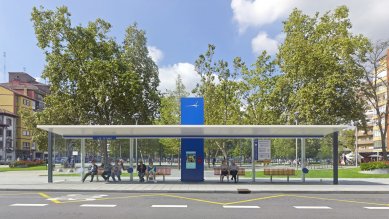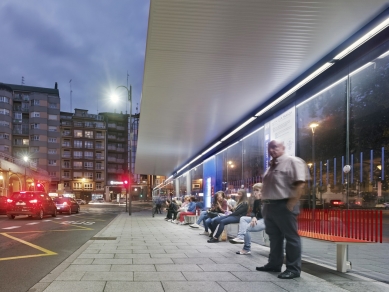
Roofing of the bus stop in Aviles

 |
A colorful graphic used on the glass side panels became part of the artistic design. The two color lines have both visual and functional significance. The thicker line indicates that it is a glazed area colorfully coordinated with the roofing. Conversely, the thin, color-divided lines complement the bench supports, which are naturally created by the glazing in the middle of the shelter. The glazed area inside the shelter gives an airy impression. Thanks to the glazing, passengers can look out into the greenery of the park. The space remains clear, and despite its striking design, it does not compete with its surroundings.
The roof is made from a sandwich panel, which gives the roofing a calm and clean impression. The overall structure is minimized to a load-bearing frame, accentuated by a dominant column that intersects the roofing. This creates the impression of an airy, levitating roof. A gutter emerging from the main column is used for drainage. It runs along the entire length of the roof. The downspouts are concealed within the cladding of the totem (sign). An LED lighting line runs along the entire length of the shelter.
The English translation is powered by AI tool. Switch to Czech to view the original text source.
0 comments
add comment















